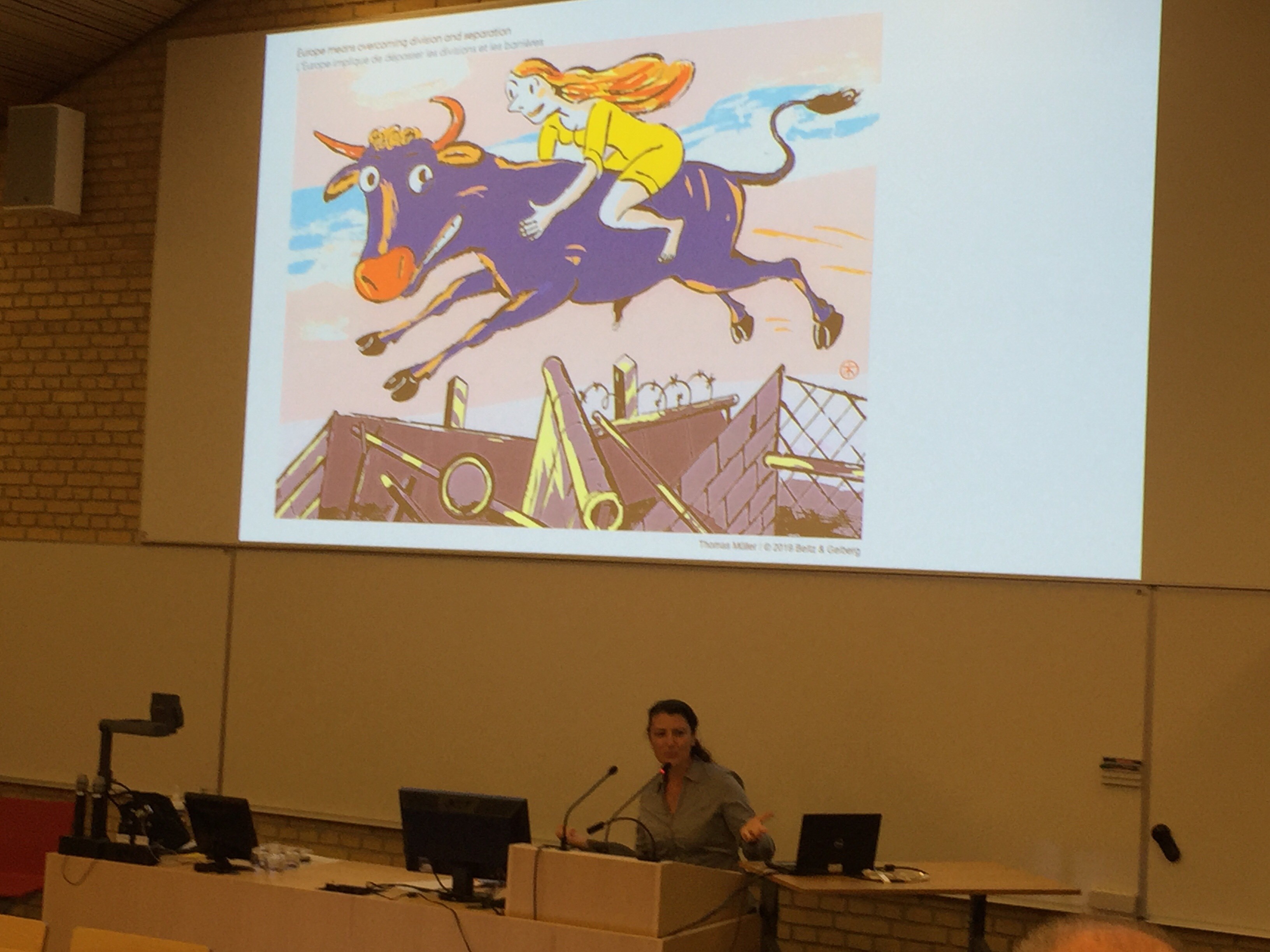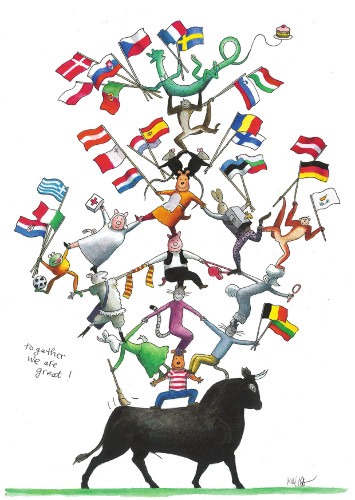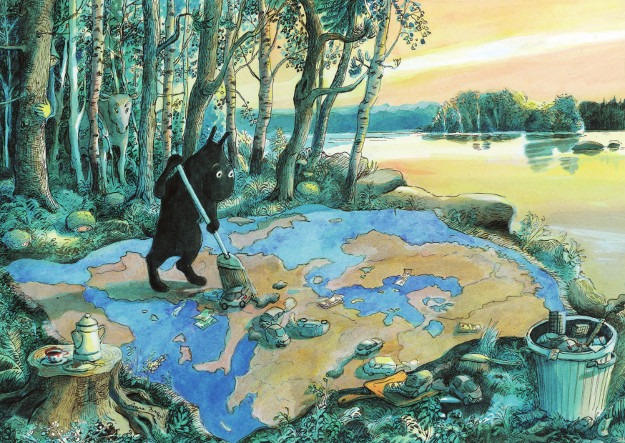Drawing Europe together – combining art, history and political science
An interdisciplinary panel at AIAS discussed the current challenges for Europe in the context of an art exhibition shown at AIAS. The exhibition “Drawing (for) Europe” brings together very different images of Europe by children book illustrators who have been asked to contribute by the Frankfurt-based editor Markus Weber.

The panel discussion “Drawing Europe Together” on 17 September, hosted by AIAS-COFUND fellow Sandra Eckert, took as a point of departure the panelists’ comments about one of the illustrations from the "Drawing (for) Europe" exhibition.
Thorsten Borring Olesen, Professor of History at the School of Culture and Society at Aarhus University, chose to comment on Thé Tjong-Khing’s drawing entitled “Together we are great!” which presents Europe as a delicate balance of diverging interests and the continuous challenge to achieve the Union’s declared goal of “unity in diversity.  Thorsten made the argument that integration dynamics often resulted from overcoming moments of crisis, and concluded that the European Union (EU) is currently facing a particularly complex phase.
Thorsten made the argument that integration dynamics often resulted from overcoming moments of crisis, and concluded that the European Union (EU) is currently facing a particularly complex phase.
Catharina Sørensen, deputy director of Think Tank Europa, elaborated on her thoughts around public support for the European project based on Jutta Bauer’s reinterpretation of the myth around Europe entitled “Europe, sceptic”.
 Sørensen emphasised that currently support for European integration is on the rise across the Continent, albeit with the caveat that some citizens perceive their national governments as being more capable to deal with the pandemic than at the European level.
Sørensen emphasised that currently support for European integration is on the rise across the Continent, albeit with the caveat that some citizens perceive their national governments as being more capable to deal with the pandemic than at the European level.
Jens Blom-Hansen, Professor at the Department of Political Science at Aarhus University, shared his thoughts about the EU’s capability to deal with the current crisis triggered by Anne Brouillard’s illustration “Killiok takes care of Europe” where the imaginary protagonist uses a broom.

Jens thus addressed the question whether Europe disposes of a broom, and compared two areas where there is a need to act, namely the rule of law and economic recovery.
According to Blom-Hansen’s assessment, the EU will have a hard time to address the first issue effectively, while the supranational response to the economic crisis resulting from the pandemic has so far been quite effective.
Organizer Sandra Eckert concluded from an inspiring discussion with the audience that European integration enters a stage where there is a renewed need for negotiated consensus in order to achieve what Thomas Mueller had in mind when he drew his image of Europa: “Europe means to overcome division and disunion”.
About the exhibition "Drawing (for) Europe"
18 freelance illustrators have put their enthusiasm, ideas and concerns about Europe into art works and have donated the 20 originals to Pulse of Europe for auction for their work. Markus Weber, Moritz Verlag Frankfurt am Main, had the generous idea for the exhibition “Drawing (for) Europe”. A collection of the work of 45 illustrators entitled “Drawing Europe together” was published by Pan Macmillan in 2018.
Since 2017 the works are on an exhibition tour through major European cities. On 17 September 2020, the art works was exhibited in the Hall of AIAS, accompanied by a multidisciplinary panel discussion.
AIAS wishes to thank Pulse of Europe for the lending out the drawings to AIAS.
pulseofeurope.eu/oureuropenow/zeichnen-fuer-europa/
Contact
Sandra Eckert, AIAS Fellow and Associate Prof. at the Department of Political Science, Goethe University Frankfurt - Main, Germany
Email: saneck@aias.au.dk
Aarhus Institute of Advanced Studies, AIAS
Aarhus University
Høegh-Guldbergs Gade 6B
DK-8000 Aarhus C
Denmark
